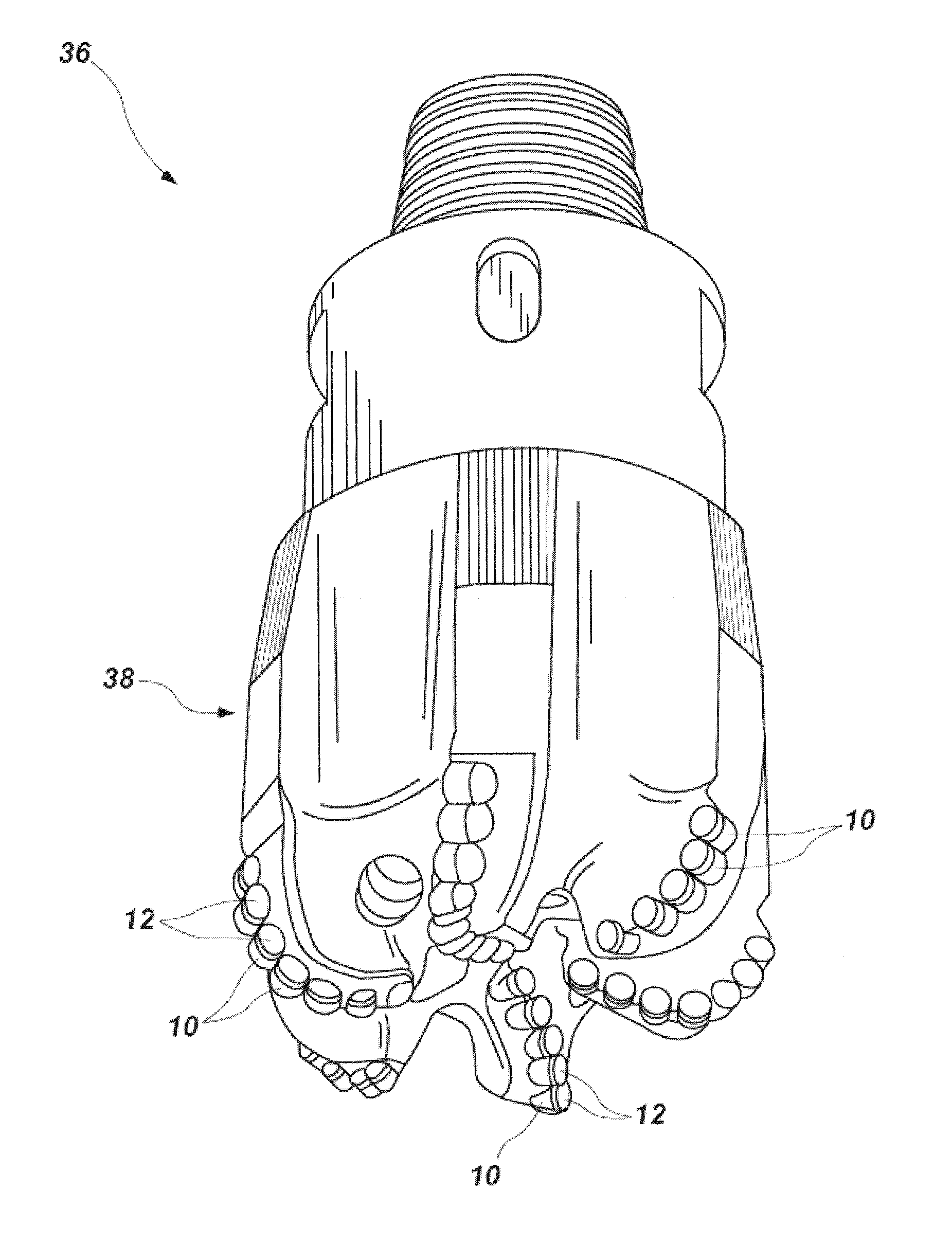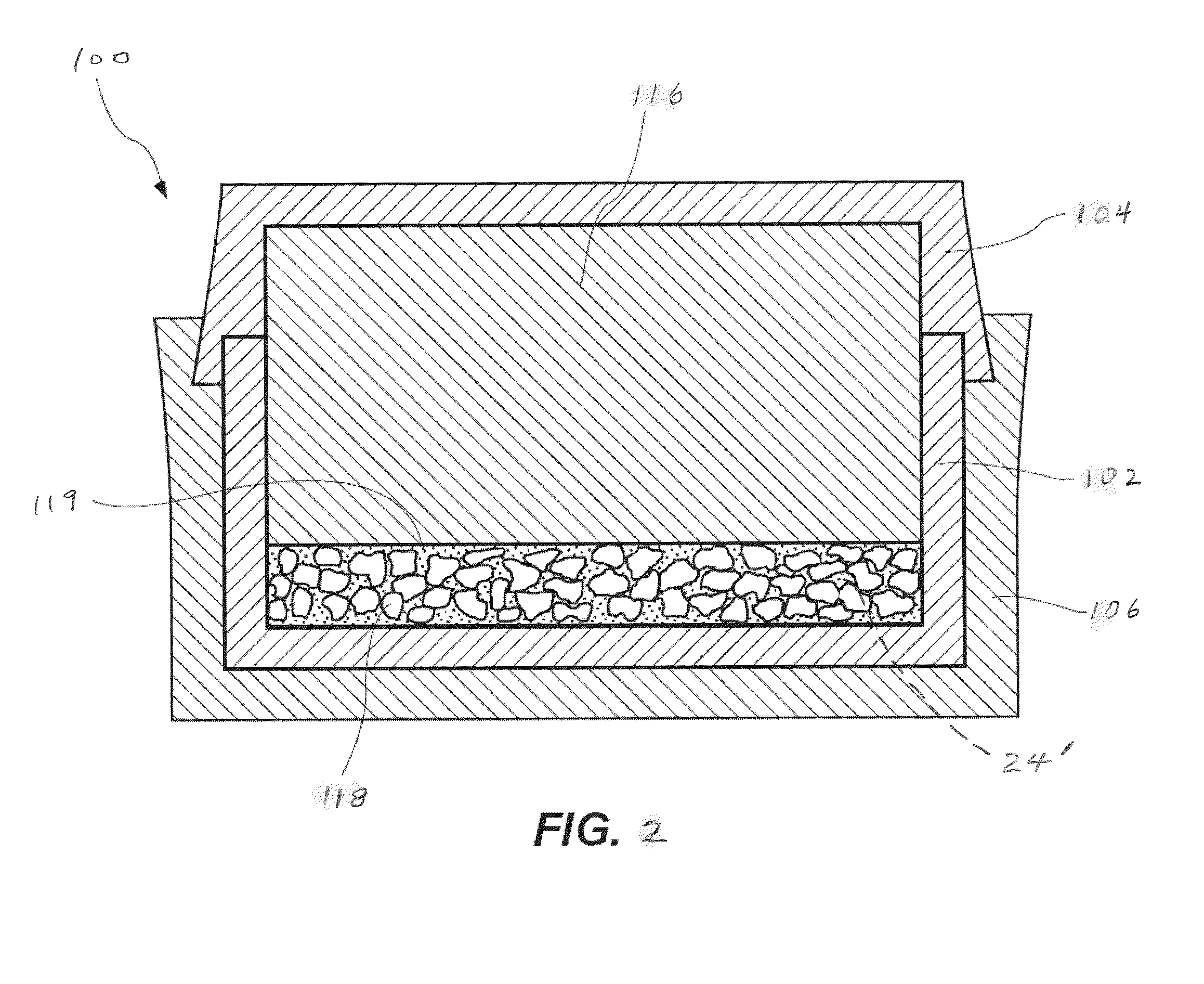Polycrystalline compacts including diamond nanoparticles, cutting elements and earth-boring tools including such compacts, and methods of forming same
a technology of polycrystalline compacts and diamond nanoparticles, which is applied in the field of polycrystalline diamond compacts, can solve the problems of loss of beneficial characteristics of abrasion resistance, significant problems, and thermal stability loss, and achieve the effects of improving the abrasion resistance of diamond nanoparticles, and improving the abrasion resistan
- Summary
- Abstract
- Description
- Claims
- Application Information
AI Technical Summary
Benefits of technology
Problems solved by technology
Method used
Image
Examples
example 1
Sintering of Diamond with a WC / Co Substrate at 7.0 kW
[0049]Diamond grains were disposed within a metal canister. A substrate blank comprising WC / Co (cobalt-cemented tungsten carbide) was placed in the metal canister over the diamond grains and the diamond nanoparticles. The substrate blank and the diamond grains were encapsulated in the canister, and were subjected to an HPHT process at a pressure of about 7.7 GPa and a temperature from about 1550° C. to about 1600° C. by applying 7.0 kW of electrical power. The HPHT process formed a PDC, which was photographed with an SEM (scanning electron microscope), as shown in FIG. 4. The diamond table is well sintered, and includes significant diamond intergrowth between diamond grains.
example 2
Sintering of Diamond with a WC / Co Substrate at 6.5 kW
[0050]A PDC was formed as described in Comparative Example 1, but only 6.5 kW of power was applied, and the sintering temperature was therefore between about 1440° C. to about 1485° C. The resulting PDC was photographed with an SEM, as shown in FIG. 5. The diamond table is under-sintered, and lacks significant diamond intergrowth.
example 3
Sintering of Diamond with a DEC Substrate at 6.5 kW
[0051]Diamond grains were disposed within a metal canister. A substrate blank comprising 90% by volume WC / Co and 10% by volume diamond was placed in the metal canister over the diamond grains and the diamond nanoparticles. The substrate blank and the diamond grains were encapsulated in the canister, and were subjected to an HPHT process at a pressure of about 7.7 GPa and a temperature from about 1440° C. to about 1485° C. by applying 6.5 kW of electrical power. The HPHT process formed a PDC, which was photographed with an SEM, as shown in FIG. 6. The diamond table is well sintered, and includes significant diamond intergrowth. Thus, the PDC may be formed with a substrate of WC / Co and diamond at a lower power level and lower temperature, yet may still attain significant diamond intergrowth.
[0052]Additional non-limiting example embodiments of the disclosure are described below.
PUM
| Property | Measurement | Unit |
|---|---|---|
| Temperature | aaaaa | aaaaa |
| Pressure | aaaaa | aaaaa |
| Volume | aaaaa | aaaaa |
Abstract
Description
Claims
Application Information
 Login to View More
Login to View More - R&D
- Intellectual Property
- Life Sciences
- Materials
- Tech Scout
- Unparalleled Data Quality
- Higher Quality Content
- 60% Fewer Hallucinations
Browse by: Latest US Patents, China's latest patents, Technical Efficacy Thesaurus, Application Domain, Technology Topic, Popular Technical Reports.
© 2025 PatSnap. All rights reserved.Legal|Privacy policy|Modern Slavery Act Transparency Statement|Sitemap|About US| Contact US: help@patsnap.com



